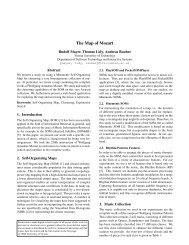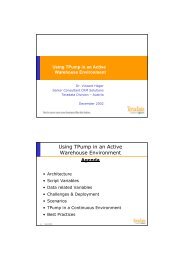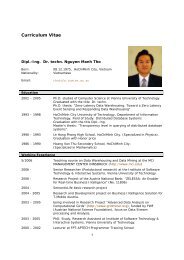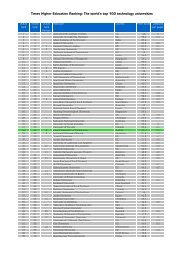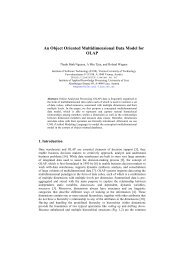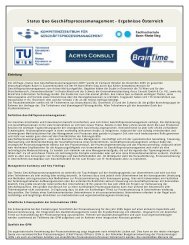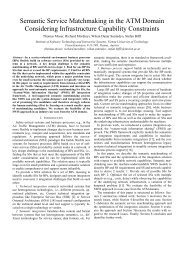Using Psycho-Acoustic Models and Self-Organizing Maps to Create ...
Using Psycho-Acoustic Models and Self-Organizing Maps to Create ...
Using Psycho-Acoustic Models and Self-Organizing Maps to Create ...
Create successful ePaper yourself
Turn your PDF publications into a flip-book with our unique Google optimized e-Paper software.
K<br />
<br />
K<br />
€<br />
K<br />
€<br />
K<br />
K<br />
K<br />
K<br />
<strong>Using</strong> <strong>Psycho</strong>-<strong>Acoustic</strong> <strong>Models</strong> <strong>and</strong> ¢¡¤£¦¥ <strong>to</strong> create a Hierarchical Structuring of Music<br />
Rather than continuing <strong>to</strong> discuss the individual units we shall now<br />
take a look at the titles of a specific artist <strong>and</strong> its distribution in<br />
this hierarchy. In <strong>to</strong>tal, there are 7 titles s¢g._::¸bv_ by in<br />
this collection, all violin interpretations, yet of distinctly different<br />
style. Her most “conventional” classical interpretations, such as<br />
`'h¢_ \ vyg ¨ðbËAg= \ 7´ ¬ eLk \ 9h ¬ ¯<br />
Brahm’s or ‚ \ ~y~*<br />
„v…<br />
Bach’s<br />
] r \ `'©†s5© AgB7´ ¬ e7kh ¯<br />
are located in the classiccluster<br />
in the upper right corner branch on two neighboring units<br />
Ag<br />
on the left side of the second-layer map. These are definitely the<br />
most “classical” of her interpretations in the given collection, yet<br />
exhibiting strong dynamics. Further 3 pieces of Vanessa Mae ( hs_<br />
‡<br />
« by Vivaldi, ˆ_Ci





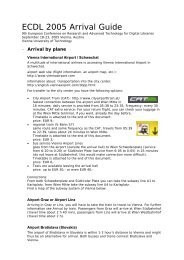
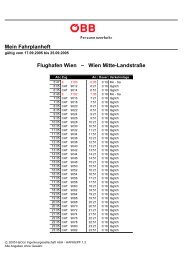
![Informationsvisualisierung [WS0708 | 01 ]](https://img.yumpu.com/22537403/1/190x143/informationsvisualisierung-ws0708-01-.jpg?quality=85)
